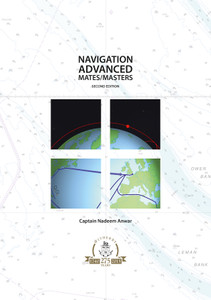
This book is a guide to best practice for parallel indexing in restricted waters.
This guide to best practice for parallel indexing in restricted waters highlights the most common errors and limitations affecting parallel indexing and how these can be safely avoided.
Topics covered include:
- radar display settings and the limitations of radar
- speed, rate and radius of turn
- characteristics of beam width
- range error
- heading marker alignment.
This publication underlines the most common errors and limitations that affect parallel indexing and have been observed by pilots of the Corporation of the Lower St. Lawrence Pilots (CLSLP) during their assignments. It should be noted that on any radar there may be other errors and limitations that have not been identified in this book. This book is the end result of observations, experiences and careful monitoring of all aspects of radar navigation in confined waters. It is based on methods that have been tested on the simulator, validated in real life and used by many of the St Lawrence River pilots. The information is useful for all navigators, whether deck officers or pilots.
In marine navigation, the main purposes of radar are to detect any vessels in the vicinity of the ship and any obstacles, such as land masses, in reduced visibility. Radar is also widely used in good visibility.
Navigators are required to understand the limitations and errors that may affect the optimum use of their radar. Navigators should familiarise themselves with the horizontal and vertical beam widths of their radars and understand the effects of these on bearing and range discrimination. Navigators should be aware of the different characteristics and limitations of X- Band (3 cm) and S-Band (10 cm) radar. They should also be aware of when to use different display and pulse settings, depending on the navigational situation. Technical knowledge of the limitations of radar equipment is a requirement for compliance with the COLREGS.
In coastal navigation, a parallel index (PI) line set as a limit to ensure that the ship will not be closer than, for example, 3 miles from the nearest danger is a safe way of monitoring the ship’s progress as small undetected errors will not put the ship in danger. However, in restricted waters, especially in channel navigation, parallel index can be used to ensure that the ship follows the track and cannot be off course by more than a small value (say, 0.03’ (180 ft)). That absolutely entails that all errors and limitations of the equipment have been thoroughly assessed.
The purpose of this publication is to explain how radar can be safely used for navigation. It is not a technical radar manual and it assumes that readers will already be familiar with radar principles.
Navigators should always familiarise themselves with the manufacturers guidance for the radar(s) on their current ship.
Note, in all the examples in this publication, the PIs, ranges and chosen routes are for demonstration only and are not reproductions of actual passages in those waters.
Foreword
Preface
1. Introduction
2. Radar Display Settings for Navigation
3. Limitations of Radar
4. Parallel Index Technique
5. Speed, Rate and Radius of Turns
6. Characteristics of Beam Width
7. Effect of Echo Enhance Function
8. The “Total” Method
9. Range Error (RE)
10. Heading Marker Alignment
11. Gyro Error and Effect on Parallel Index Technique
12. Practical Example of Problem Solving
13. Error Analysis in Reduced Visibility
14. When Not to Use Parallel Index Technique
15. Radar Repeater
16. Examples
17. ARPA: Main Features and Situational Examples
18. ARPA Target Referencing
19. Course Over Ground: ARPA GNSS Discrepancies
20. Radar Image Overlay (RIO), ARPA and ECDIS
21. Radar Mapping Option
22. Some Radar Myths
23. Conclusion
References
Appendix 1: ECDIS and Radar Answers
Appendix 2: Example of Excessive Range Error in Relation to PI
Maritime Simulation and Resource Centre (MSRC)
Founded in 2005, the Maritime Simulation and Resource Centre (MSRC) is a purpose-built marine pilot simulation training and turnkey port procedural development facility, offering unique navigational safety expertise in North America.
Captain Alain Victor, MM
Witherbys
Witherbys titles are developed using scripts developed by technical experts that are peer reviewed within work groups. Typically, they seek to improve understanding of the regulations, recommendations and guidelines issued by Industry.
Witherbys staff have significant expertise in the fields of navigation and hazardous cargoes as well as in the presentation of complex subjects in a graphic and easy to understand manner.
- Number of Pages:
- 150
- ISBN:
- 9781856099165
- Published Date:
- July 2020
- Binding Format:
- Paperback
- Book Height:
- 300 mm
- Book Width:
- 215 mm
- Weight:
- 0.9 kg
- Author:
Captain Alain Victor, MM
- Preview:
- Yes



